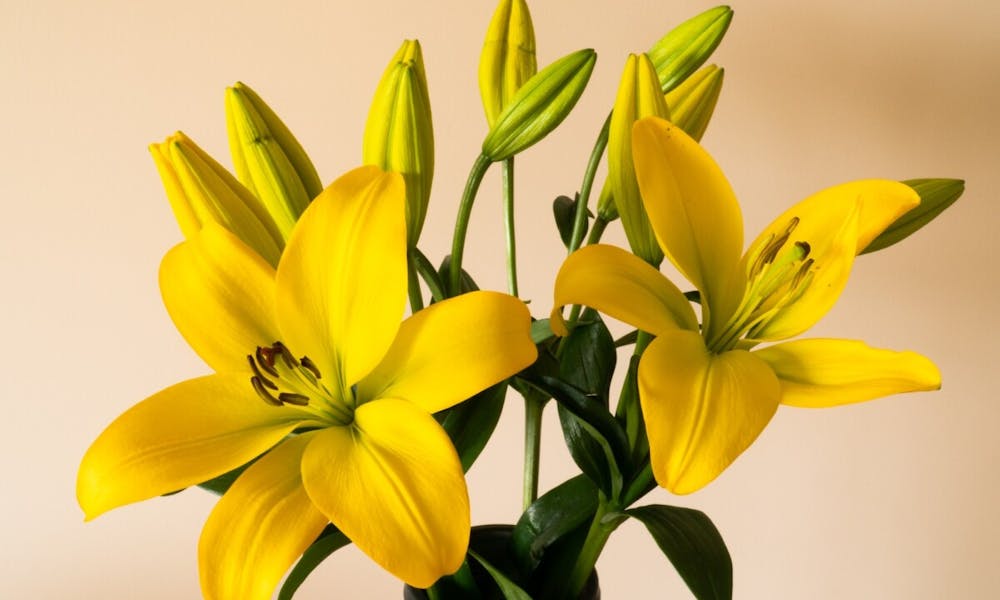MENU
What Does a Yellow Flower Mean: Unraveling the Symbolism and Significance

Yellow flowers have a captivating beauty that evokes feelings of warmth, happiness, and vitality. The color yellow, often associated with sunshine and joy, carries symbolism and meaning in the world of flowers. In this article, we will unravel the significance of yellow flowers, exploring their diverse interpretations and cultural associations. From friendship and happiness to new beginnings and positivity, we will delve into the multifaceted nature of what a yellow flower represents. By understanding the symbolism behind these cheerful blooms, you can gain a deeper appreciation for their vibrant presence in gardens and floral arrangements.
The Symbolism of Yellow: A Ray of Sunshine
Yellow, the color of the sun, is inherently associated with positive energy and warmth. It symbolizes happiness, optimism, and the radiance of life. When this vibrant hue is translated into the language of flowers, it carries its own unique symbolism. Here are some key interpretations and meanings attributed to yellow flowers:
- Friendship and Joy: Yellow flowers often symbolize friendship and joyous connections. They are gifted to celebrate and strengthen the bond between friends, conveying feelings of happiness, appreciation, and warmth. Yellow flowers can be a beautiful way to express gratitude and delight in the presence of cherished friends.
- Positivity and Optimism: Just as the color yellow exudes brightness and optimism, yellow flowers embody these qualities as well. They serve as reminders to embrace positivity, to find beauty in the simple pleasures of life, and to approach challenges with a hopeful and optimistic mindset. Yellow flowers can infuse spaces with a sense of joy and create an uplifting ambiance.
- New Beginnings and Growth: Yellow flowers are often associated with new beginnings and the promise of a bright future. Their vibrant hue represents the dawning of a new chapter, the blossoming of ideas and dreams, and the potential for personal growth. Yellow flowers can serve as beacons of inspiration, encouraging individuals to pursue their passions and embark on new journeys.
Cultural Associations and Symbolic Meanings
The symbolism of yellow flowers transcends borders and cultures, leaving its mark on various traditions and historical contexts. Let’s explore a few examples of cultural associations and symbolic meanings:
Eastern Cultures
In Eastern cultures, particularly in Japan and China, yellow flowers often symbolize happiness, prosperity, and good fortune. Chrysanthemums, for instance, are highly regarded and associated with longevity and happiness. In China, the yellow lotus holds deep spiritual significance and is linked to purity, enlightenment, and spiritual rebirth.
Western Cultures
In Western cultures, yellow flowers are commonly associated with friendship, joy, and positivity. The exchange of yellow flowers between friends signifies a bond of trust, affection, and support. In folklore and literature, yellow flowers are often used as symbols of happiness and the arrival of spring.
Yellow Flowers in Nature and Everyday Life
Yellow flowers can be found in a diverse range of plant species, each carrying its own unique charm and symbolism. Here are some examples of yellow flowers and their significance:
Sunflowers (Helianthus spp.)
Sunflowers are iconic yellow flowers that epitomize happiness and radiance. They are often associated with loyalty, adoration, and the warmth of the sun. Sunflowers symbolize the importance of embracing positivity, facing challenges with resilience, and finding joy in life’s simplest pleasures.
Daffodils (Narcissus spp.)
Daffodils, with their vibrant yellow blooms, are among the first flowers to herald the arrival of spring. They symbolize rebirth, new beginnings, and the awakening of nature after the dormant winter months. Daffodils are often associated with hope, optimism, and the promise of brighter days ahead.
Marigolds (Tagetes spp.)
Marigolds, with their cheerful yellow and orange flowers, are known for their vibrant colors and strong scent. They are often associated with positive energy, good fortune, and protection from negative influences. Marigolds are commonly used in cultural celebrations and festivals to bring joy and ward off evil spirits.
Buttercups (Ranunculus spp.)
Buttercups, with their delicate yellow petals, are symbols of youthful innocence, joy, and playfulness. These bright and cheerful flowers evoke a sense of childlike wonder and remind us to embrace the simple pleasures in life. Buttercups are often associated with happiness and the arrival of spring.
Conclusion
Yellow flowers, with their radiant hues and uplifting energy, hold significant symbolism and meaning. They represent friendship, joy, positivity, and new beginnings, serving as reminders to embrace happiness and find beauty in life’s simplest moments. Whether it’s a bouquet of yellow roses given to a dear friend or a field of sunflowers that brightens your day, yellow flowers bring a ray of sunshine to our lives.
As you encounter yellow flowers in nature or incorporate them into your surroundings, take a moment to appreciate their vibrant presence and the symbolism they carry. Allow their cheerful blooms to uplift your spirits, infuse your surroundings with positivity, and serve as a reminder to cherish the friendships and new beginnings that bring joy to your life.

